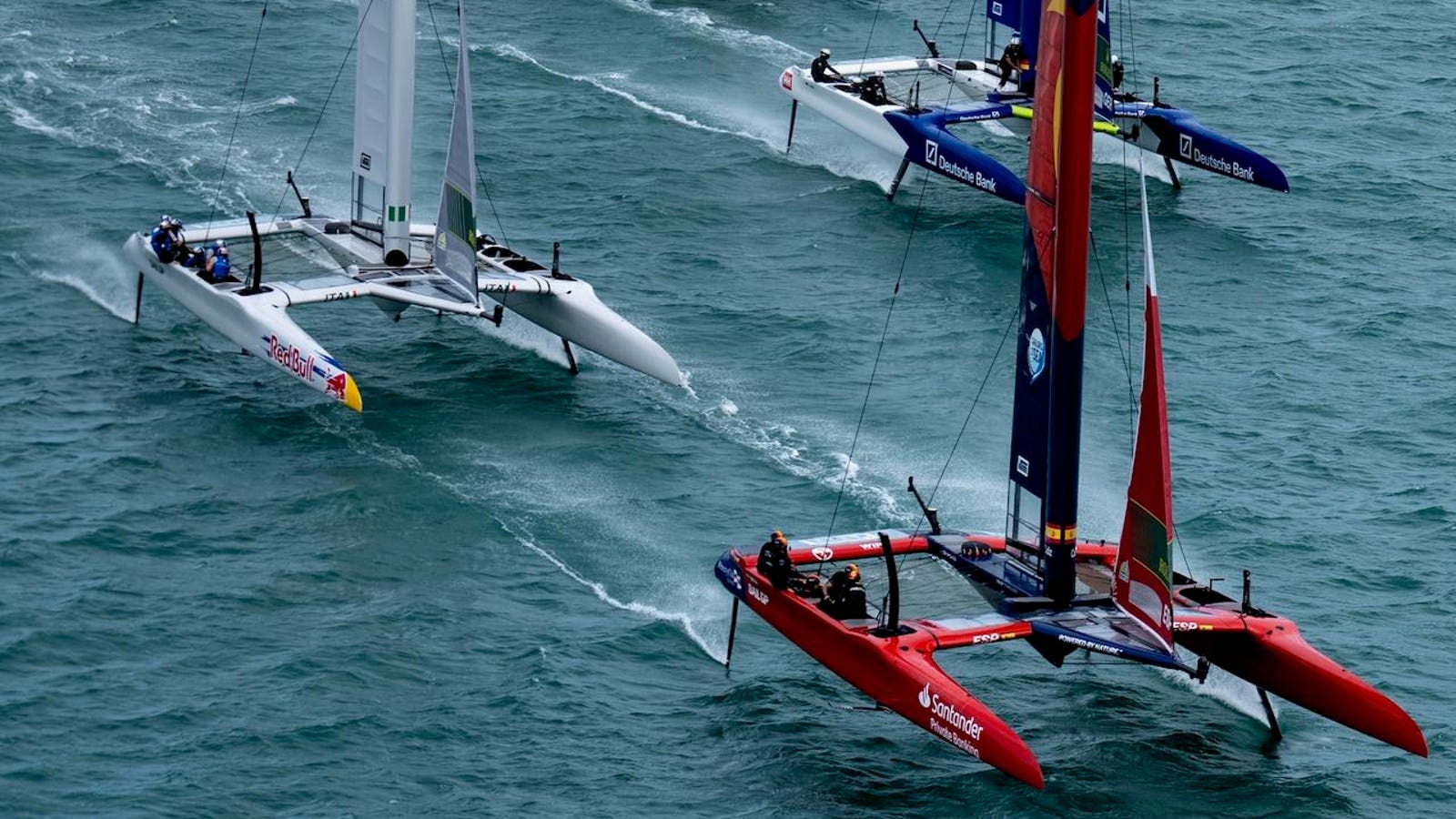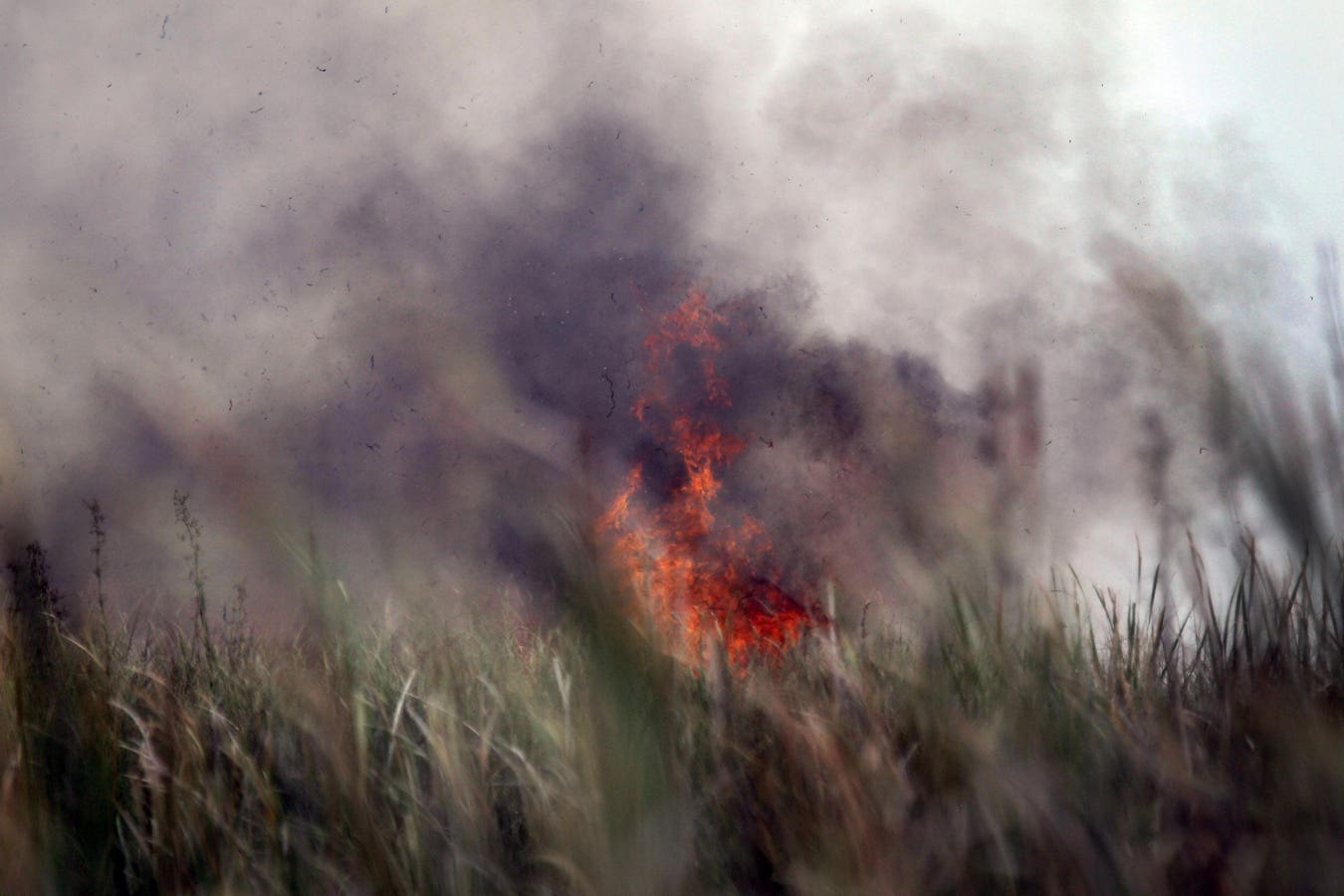For high-speed sail racing, the complexity of what takes place on water is slightly surpassed by the complexity of its required organization on land. This became clear from talking—between watching sail races—to those involved with organizing a Rolex SailGP event in France.
SailGP catamarans racing
Rolex SailGP
SailGP races began in 2018. According to the organizers, these include “short, intense races at iconic stadium-style venues across the globe” which form a “…close-to-shore, high-speed, high-tech racing series.” This year and next year a dozen international teams are racing identical F50 catamarans in cities that include Saint Tropez in France, Geneva in Switzerland, Andalucia-Cádiz in Spain, Perth in Australia and New York in the USA.
Because these racing catamarans are identical, winning an event depends largely on the skill of each team, comprised of six crew members—each with a specific role. They are no longer called sailors, but athletes, and their individual titles include “strategist,” “wing trimmer” and ‘flight controller.” On water, the colorfully sailed catamarans swoop, glide and swish—more like kites in a sky than boats at sea; more osprey than swan.
Last week I drove to Saint Tropez in southern France to watch a day of races at the ROCKWOOL France Sail Grand Prix. The approach to town is via a narrow, curly and sometimes vehicle-crammed mountain road. The Rolex SailGP events were scheduled to take place on Friday and Saturday—with four races per day, each one lasting about a dozen minutes. The Friday midafternoon temperature was 82 Fahrenheit (28 Celsius) and there were brisk winds, blue skies and sunshine. (Saturday, in contrast, was so stormy that races had to be cancelled.)
While a helicopter hovered above Saint Tropez, visitors in the ‘adrenaline lounge’ paced about wearing Saint Tropez chic summer attire and a wide range of Swiss watches. They sipped glasses of Barons de Rothschild Concordia Brut Champagne, or rosé spritz or French 75 cocktails (topped with fresh chunks of honeycomb and yellow flower petals) while eating avocado and goat cheese, or raspberry and pistachio, croissants.
On the water, meanwhile, race crews constantly read wind shifts and reacted with coordinated tact during complex, high speed competitions. Each dual hulled catamaran, once it gains adequate speed, is lifted out of water and into air by a hydrofoil—which pushes each craft upward in the same way that a wing lifts an airplane. This lets the bulk of these craft fly through air—at speeds up to 60 miles per hour (100 kilometers per hour)—rather than churn through water.
Stephan Kandler is founder and co-director of K-Challenge, which runs the French SailGP team.
“Today we have 25 knot winds, and the boats are fast and it’s spectacular. That’s what we want to show. And the stadium for viewers is very close, which is a goal of SailGP.”
Kandler highlighted an ongoing challenge in the sail racing community: team members work on projects, or races, which often provides a lifestyle with scant long-term stability. These SailGP events offer another venue that crews can train for.
“SailGP completely changed the game. Like Formula 1—every month you have a race going all over the world to cities like Saint-Tropez, New York or Dubai. Sailing is becoming very popular, thanks to that.”
At SailGP events spectators sit in stands and watch a complex ballet of high tech competition on water. Yet most viewers are unaware of the complex coordination that takes place out of sight.
Stephanie Nadin coordinates events for Rolex SailGP within France and Switzerland. She highlighted benefits and challenges of Saint Tropez as a venue. She also implied that for race crews, adaptability is as important as any navigation skill.
“Sailors love to come to Saint-Tropez because of the conditions, because of what it represents. But the biggest challenge is size—because it’s a village. We cannot build bases for all race teams, and they have to share. In the past they didn’t want to, but here they had to. Suddenly, they started to find solutions, and to work differently. It’s also a site that is very compact. There are other big cities where sites are completely far away from each other—which doesn’t work well because people don’t really understand all that takes place in the shadows. Here—it’s like a Formula 1 paddock. For the public it’s good to see the cranes lift boats. It’s part of the show.”
SailGP racing off coast of Saint Tropez, France
Rolex SailGP
Chris Travers worked on business development for Formula 1 sports car racing before transitioning to the world of sails. As Commercial Director of the NorthStar SailGP team of Canada, he emphasized how these events are increasing the overall popularity of nautical racing.
“You have in port, close to harbor racing that is targeting fans. It makes it exciting. The adrenaline this sport is creating and driving and pushing is like nothing that the sport had before.”
Emirates Great Britain SailGP Team, led by Dylan Fletcher, was awarded the winner of the Saint Tropez event—their second consecutive victory. The French team took fifth place out of twelve. Next week these catamarans and teams will race again, on Lake Geneva.
SailGP F50 catamaran fleet – ROCKWOOL France Sail Grand Prix, Saint Tropez, France
Jason Ludlow for SailGP









